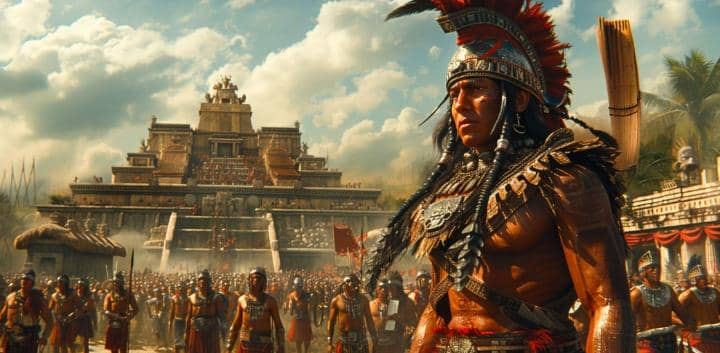The Aztec Empire, a dominant force in Mesoamerica from the 14th to the 16th centuries, was primarily located in what is now central Mexico, particularly around present-day Mexico City.
The Mexica people, who founded the empire, migrated from a mythical homeland called Aztlán, eventually settling on an island in Lake Texcoco. There, they established Tenochtitlán in 1325, which became a thriving capital known for its advanced urban planning, including canals and causeways.
At its height, the Aztec Empire was a complex society with a rich cultural heritage. It was organized into city-states that paid tribute to the emperor, forming a powerful alliance known as the Triple Alliance with the city-states of Texcoco and Tlacopan.
This coalition allowed the Aztecs to dominate trade and military endeavors across Mesoamerica, leading to significant territorial expansion.
The Aztecs were remarkable agricultural innovators, utilizing chinampas—floating gardens—to maximize crop production in the swampy lake environment. Their society was hierarchical, with a ruling class of nobles and a significant population of commoners and slaves.
The Aztecs also developed a sophisticated legal system, two calendars, and a writing system using pictographs.
Religious practices were central to Aztec life, with a pantheon of gods, including Huitzilopochtli and Quetzalcoatl. Human sacrifices were performed to appease the gods, reflecting their belief in the necessity of such offerings for the continuation of life and prosperity.
The grandeur of their temples and the vibrancy of their markets underscored their cultural achievements.
The empire’s decline began with the arrival of Spanish conquistadors led by Hernán Cortés in 1519.
Misunderstandings and alliances led to the fall of Tenochtitlán in 1521, marking the end of the Aztec Empire.
Despite its demise, the Aztec legacy endures in modern Mexican culture, language, and agricultural practices, showcasing the profound impact of this extraordinary civilization.

